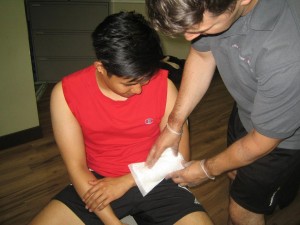It is important to note that burning skin can be painful and typically occurs once the skin came in contact with fire, hot surfaces and prolonged exposure to the sun. Burns can affect the various skin layers and categorized as first-degree burn, second-degree burn and third-degree burn.
For a first-degree burn, it is only superficial since it only affects the epidermis or exterior skin layer. A second-degree burn or partial-thickness burn affects both the epidermis and dermis. As for a third-degree burn or full-thickness burn, it involves all the skin layers. Take note that burning skin can eventually lead to extensive and even life-threatening complications. It is important that you know how to properly manage burns even at home and when to seek medical care. All you have to do is to register for first aid training today.
Infection
When it comes to burning skin, the common side effect is no other than infection due to the higher risk. Oftentimes, it can be hard to distinguish the difference between the reddening of the skin and the redness caused by an infection. You have to pay close attention to the color of the burning skin.

Oftentimes, an infection can develop if the skin is swollen and purple in color. Additionally, the burn can eventually creep into the deeper layers of the skin. The infection in a first-degree burn can radiate to all the skin layers. In some cases, the infected burn will also drain pus and fever can also develop.
Dehydration
Burning skin covering a large area in the body can also lead to dehydration. When the skin is burned, the skin will lose its fluid content once it is burned. The indications of dehydration will include dizziness, thirst, lightheadedness, weakness and scanty urination.
Shock
It is important to note that burning skin can eventually lead to shock. Always bear in mind that shock is considered as a medical emergency in which the blood pressure drops drastically in which not enough blood can circulate to the bodily organs. If shock is suspected, immediate emergency assistance is required.
Skin cancer
Skin that has been sunburned can increase the risk for the development of skin cancer. Regular exposure to the sun will alter the genetic material in the skin called as DNA. Skin cancer usually develops on the lips, chest, face, legs and arms.
What are the other side effects?
Extensive burns can eventually lead to scar formation, skeletal muscle breakdown and eschars. The eschars are basically patches of dead skin that oftentimes develop as the burning skin starts to heal. Take note that these thickened patches of necrotic skin can disrupt the flow of blood. As for skeletal muscle breakdown, it can lead to myoglobin release which can reach the kidneys and result to kidney failure.
